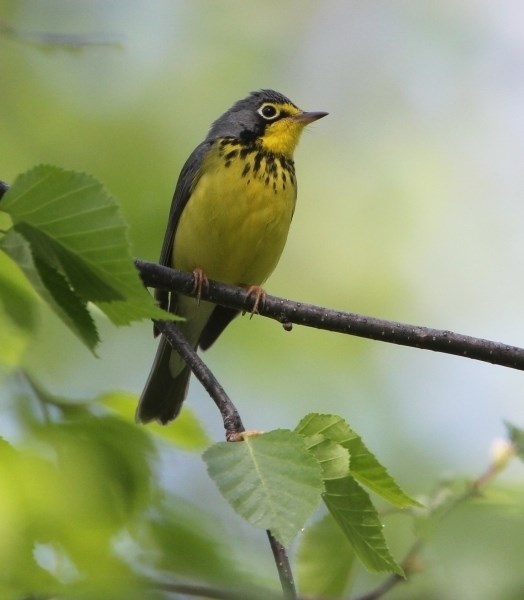One of the richest birding areas in Alberta is located around Bonnyville and Cold Lake with three-quarters of the province's bird species living amongst the region's diverse landscape.
“The MD of Bonnyville is very rich and diverse in its habitat. It encompasses parkland agricultural area in the south and moves into boreal forest in the north, so you get a good mix of parkland birds and boreal birds,” said Ted Hindmarch, president of the Beaver River Naturalists Society.
Every year hundreds of birds flock to the Lakeland region due to this diverse habitat and bring hundreds of avid bird watchers with them. The region is known as one of the go-to locations for birding in the province as over 290 species can be seen.
Geese, swans, ducks, herons, hawks, eagles, gulls, cranes, loons, wrens, woodpeckers, flycatchers, warblers, sparrows, finches and swallows are just some of the many birds awaiting to be discovered by bird lovers in the region.
“One of the key species that people travel to the Cold Lake area for are the warblers who move up the boreal forest edge from the east and they come in through Cold Lake provincial park,” said Hindmarch.
Over 20 different types of Warblers have been spotted in the Cold Lake region over the past few years with local bird watchers recording sightings of the Canada warbler, the Blackburnian warbler and the Yellow-rumped warbler among others.
These bird sightings get recorded by Hindmarch and other avid bird enthusiasts during a series of bird counts conducted over the course of the year.
The Beaver River Naturalist Society is the local club that organizes the local bird counts, the last of which was conducted over two days at the end of May.
“In the May species count we conducted this year we had a huge number, maybe up to 500, Sabine's Gulls, which are an arctic species that pass through certain areas of the province,” said Hindmarch. “A lot of people don't get to see them very regularity, so it was quite a treat.”
Sabine's Gulls are just one of over 15 different types of gulls one can spot in the area. Other types of gulls include the Ring-billed Gull, the Lesser Black-backed Gull and the Mew Gull.
When conducting these bird counts Hindmarch says the group has a plethora of lakes in which they can go to find the many different species of bird prevalent in the region.
In Bonnyville, Jessie Lake is one of the hot spots for birding as many different types of birds can be spotted on the water and in the adjacent wetlands.
“Jessie Lake is just a wonderful wetlands to walk around and view lots of different water fowl,” said Hindmarch. “During certain times of the year the tundra swans and geese are coming through. That is always an interesting spot to visit.”
Cold Lake itself is also a great destination for birding as it is an important breeding ground for numerous waterfowl, including colonial nesting birds such as Western Grebes. One of the largest nesting colonies of Western Grebes in the province can be found in the shallow bay adjacent to Cold Lake Provincial Park.
The provincial park also proves to be a great place to go bird watching as the lake and surrounding forest is inhabit by many perching birds such as wood warblers, sparrows, flycatchers, thrushes and vireos.
While the region is diverse with lakes and wetlands and offers bird lovers a variety of different view areas, Hindmarch says one of his favourite locations is up near Iron River, at the bottom corner of Manatokan Lake.
“I have a number of locations I like to visit and it depends on the time of year,” said Hindmarch. “In the spring the southeast corner of Manatokan Lake is a flooded marsh area and it always had a good variety of shore birds. That is an area I enjoy.”
Along with two yearly bird counts, one in May and one in December, Hindmarch goes on a variety of bird watching treks throughout the region. He recently returned from walking a breeding bird survey route, which started near Angling Lake and went west and north to the east side of Ardmore.
“One of the highlights this year was that we had 13 black-billed cuckoos calling,” said Hindmarch. “They are a species, which are really transient and tend to follow tent caterpillar outbreaks.”
In the winter months many other birds flock to Cold Lake as the deep water results in the Lake taking a lot longer to fully freeze.
“We get water fowl there that they don't experience in other parts of Alberta because the water is still open,” said Hindmarch. “Quite often we will get arctic migrant species.”
With almost 300 species of birds available to be seen in the region it is no wonder the area attracts many different bird lovers.
“There are opportunities for anyone interested in birding to get in touch with us and participate in some of our counts,” said Hindmarch.



